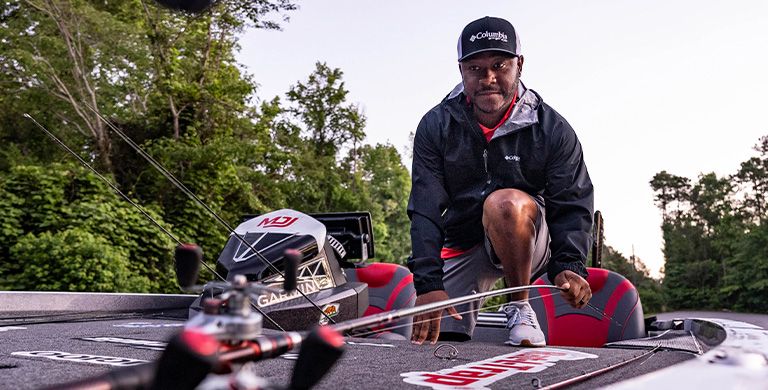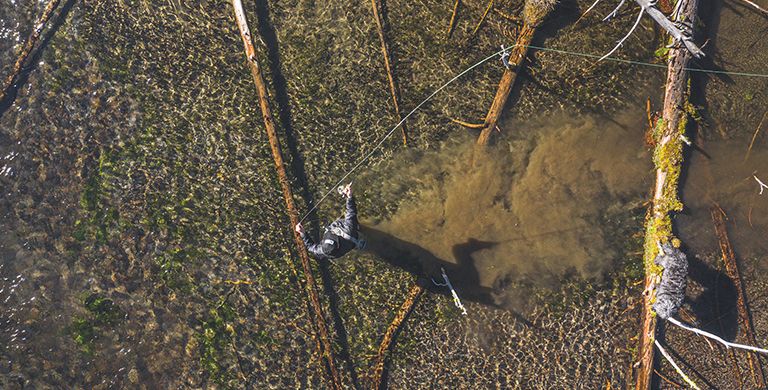FISHING
Lightning Safety Tips for Boaters, Anglers and Swimmers
In the conclusion of Columbia's thunder and lightning safety series, learn how to stay safe during a storm when you are out on the water.
BY NANCY BOUCHARD
Boats and fishing are a way of life for many of us. Heading out on the water, whether it’s a bass boat, paddleboard, kayak, raft or fishing vessel provides fun, exercise, and an irrefutable sense of fulfillment of being one with nature. There’s also the spectacular scenery that only a lake, river, or ocean view can provide.
Most of us know about water safety; the importance of knowing how to swim, always wearing a lifejacket, and respecting signage concerning potential hazards. But how many of us really worry about the real dangers of lightning? It turns out, fishing is by far the deadliest outdoor activity when it comes to lightning (it accounts for 9 percent of deaths), followed by beach activities and boating.
John Jensenius, one of the country’s foremost lightning safety specialists is also known as “Dr. Lightning.” He leads the National Lightning Safety Council and spent more than four decades as a meteorologist for the National Weather Service. Jensenius has collected data on lightning fatalities for years from 2006 through 2023. During that time, almost two thirds of the deaths occurred to people who were enjoying the outdoors, with a whopping 20 percent happening when people were fishing, boating or at the beach. Here are some strategies from the expert to keep you safe on the water and shore.
Most of us know about water safety; the importance of knowing how to swim, always wearing a lifejacket, and respecting signage concerning potential hazards. But how many of us really worry about the real dangers of lightning? It turns out, fishing is by far the deadliest outdoor activity when it comes to lightning (it accounts for 9 percent of deaths), followed by beach activities and boating.
John Jensenius, one of the country’s foremost lightning safety specialists is also known as “Dr. Lightning.” He leads the National Lightning Safety Council and spent more than four decades as a meteorologist for the National Weather Service. Jensenius has collected data on lightning fatalities for years from 2006 through 2023. During that time, almost two thirds of the deaths occurred to people who were enjoying the outdoors, with a whopping 20 percent happening when people were fishing, boating or at the beach. Here are some strategies from the expert to keep you safe on the water and shore.

Q. What are some of the statistics that involve water sports, beach activities and fishing?
A. Leisure activities contribute to 62% of the overall deaths from lightning, with water-related deaths making up more than half of the number (35 percent). If you are fishing, boating, swimming, or just relaxing at a beach, river or lake, the potential of a thunderstorm is something you need to figure into the equation.
Fishing makes up about 40 percent of water-related deaths with boating (power boats, jet skis, canoes, sailboats, tubes) contributing to another quarter of the recorded fatalities. Nearly a third of the victims were involved in beach related activities, including swimming.
Fishing makes up about 40 percent of water-related deaths with boating (power boats, jet skis, canoes, sailboats, tubes) contributing to another quarter of the recorded fatalities. Nearly a third of the victims were involved in beach related activities, including swimming.
Q. Why is fishing and boating particularly dangerous during a thunderstorm?
A. These activities are especially dangerous because fishermen and boaters are likely to be out in the open and more vulnerable to a direct lightning strike; the background noise from a motor or waves may limit their ability to hear thunder; and they may need extra time to get to a safe place.

Q. If a person is out on a boat, what are the best safety strategies (say a person can't get to shore)?
A. Being out on a boat is a very dangerous situation. If there is any chance of a thunderstorm, don’t be out on the water. If you are and see any signs of a developing or approaching thunderstorm, head to shore immediately and look for a safer place. The key is to monitor weather conditions closely and react quickly to any developing threat. While many of the fishing and boating victims realized that a dangerous situation was developing and were heading toward safety, they just didn't react soon enough to avoid being struck.
Q. Any other advice to people who are on a boat and can’t reach shore and a safe place?
A. If you are in a boat and see lightning or hear thunder, put on a lifejacket. It won’t prevent you from being struck, but if you are struck and end up in the water, it increases the chance that someone can help you. People who are struck are often unconscious. Being unconscious and in the water is a bad situation especially if you aren’t wearing a lifejacket.

Q. What do you do if you are in a boat and absolutely cannot get to shore?
A. If you are in a boat with an enclosed cabin, stay inside, and avoid touching anything metal. If there’s no cabin, stay in the middle of the boat, getting as low as possible.
If you are a scuba diver, the best advice is to stay several meters under the surface (ideally until the thunderstorm has passed).
If you are a scuba diver, the best advice is to stay several meters under the surface (ideally until the thunderstorm has passed).
Q. Why are beach goers so vulnerable?
Beach-related activities were the second greatest contributor to lightning deaths. Along the East Coast of the U.S. beachgoers face the east (toward the ocean) and storms approach from the west. They may have been unaware of the darkening skies associated with an approaching thunderstorm. In addition, the sounds of the surf may have masked the sound of thunder which also could have provided an earlier awareness that thunderstorms were developing or approaching. In other cases, due to a lack of situational awareness, victims had walked or run along the beach and may have been far from safety when the storm approached. Get out there and have fun, but as in all outdoor activities, situational awareness should be a part of your daily toolkit.
For more information on how to stay safe during electrical storms, check out these additional articles in Columbia's thunder and lightning safety series.Part 1: What to Know About Thunder and Lightning
Part 2: Lightning Facts and Tips That Can Make a Difference
Part 3: Thunder and Lightning Safety for Camping and Hiking
For more information on how to stay safe during electrical storms, check out these additional articles in Columbia's thunder and lightning safety series.
Weather can change quickly out on the water. Prepare for any kind of weather with boating and fishing apparel from Columbia Sportswear.



